Eunkyu Oh
TempGNN: Temporal Graph Neural Networks for Dynamic Session-Based Recommendations
Oct 20, 2023Abstract:Session-based recommendations which predict the next action by understanding a user's interaction behavior with items within a relatively short ongoing session have recently gained increasing popularity. Previous research has focused on capturing the dynamics of sequential dependencies from complicated item transitions in a session by means of recurrent neural networks, self-attention models, and recently, mostly graph neural networks. Despite the plethora of different models relying on the order of items in a session, few approaches have been proposed for dealing better with the temporal implications between interactions. We present Temporal Graph Neural Networks (TempGNN), a generic framework for capturing the structural and temporal dynamics in complex item transitions utilizing temporal embedding operators on nodes and edges on dynamic session graphs, represented as sequences of timed events. Extensive experimental results show the effectiveness and adaptability of the proposed method by plugging it into existing state-of-the-art models. Finally, TempGNN achieved state-of-the-art performance on two real-world e-commerce datasets.
SR-GCL: Session-Based Recommendation with Global Context Enhanced Augmentation in Contrastive Learning
Sep 23, 2022
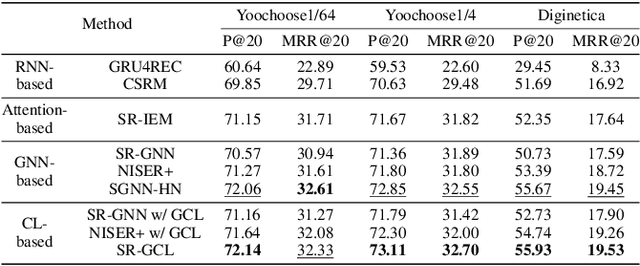
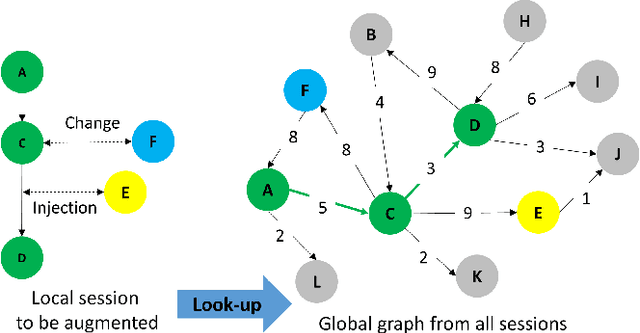

Abstract:Session-based recommendations aim to predict the next behavior of users based on ongoing sessions. The previous works have been modeling the session as a variable-length of a sequence of items and learning the representation of both individual items and the aggregated session. Recent research has applied graph neural networks with an attention mechanism to capture complicated item transitions and dependencies by modeling the sessions into graph-structured data. However, they still face fundamental challenges in terms of data and learning methodology such as sparse supervision signals and noisy interactions in sessions, leading to sub-optimal performance. In this paper, we propose SR-GCL, a novel contrastive learning framework for a session-based recommendation. As a crucial component of contrastive learning, we propose two global context enhanced data augmentation methods while maintaining the semantics of the original session. The extensive experiment results on two real-world E-commerce datasets demonstrate the superiority of SR-GCL as compared to other state-of-the-art methods.
STING: Self-attention based Time-series Imputation Networks using GAN
Sep 22, 2022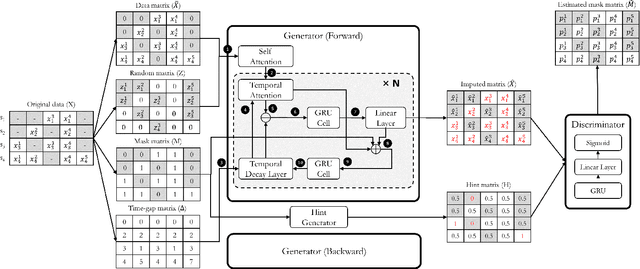
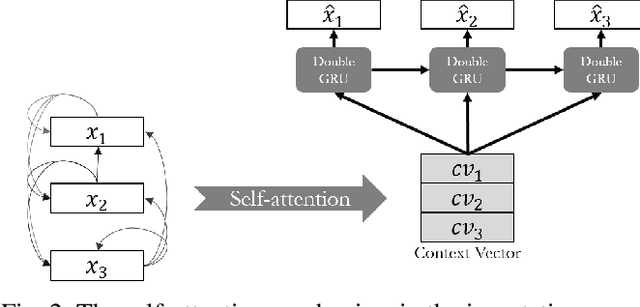
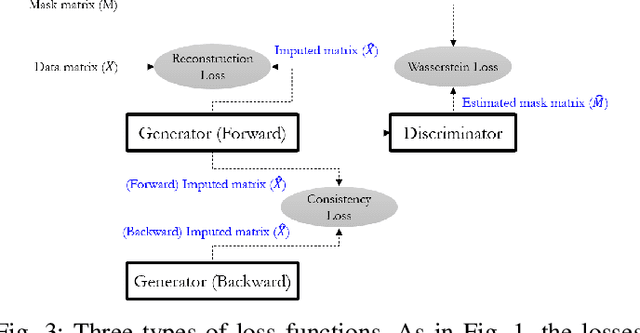
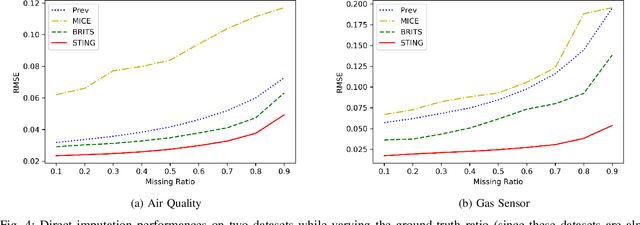
Abstract:Time series data are ubiquitous in real-world applications. However, one of the most common problems is that the time series data could have missing values by the inherent nature of the data collection process. So imputing missing values from multivariate (correlated) time series data is imperative to improve a prediction performance while making an accurate data-driven decision. Conventional works for imputation simply delete missing values or fill them based on mean/zero. Although recent works based on deep neural networks have shown remarkable results, they still have a limitation to capture the complex generation process of the multivariate time series. In this paper, we propose a novel imputation method for multivariate time series data, called STING (Self-attention based Time-series Imputation Networks using GAN). We take advantage of generative adversarial networks and bidirectional recurrent neural networks to learn latent representations of the time series. In addition, we introduce a novel attention mechanism to capture the weighted correlations of the whole sequence and avoid potential bias brought by unrelated ones. Experimental results on three real-world datasets demonstrate that STING outperforms the existing state-of-the-art methods in terms of imputation accuracy as well as downstream tasks with the imputed values therein.
 Add to Chrome
Add to Chrome Add to Firefox
Add to Firefox Add to Edge
Add to Edge